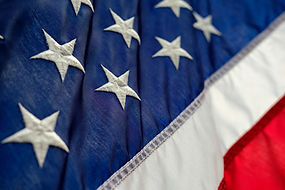Is your snooker table not performing as it should? If your shots are missing the mark and the bounce isn’t quite right, worn-out cushions could be to blame. Replacing these cushions is crucial for restoring your table’s optimal performance, ensuring that each game is as enjoyable as the first. This guide will walk you through the entire process of cushion replacement, from initial assessment to final touches.

Why Cushion Replacement Matters
Cushions are essential to the game play on your pool or snooker table. Over time, they can become worn, leading to unpredictable ball movement and reduced responsiveness. Replacing old cushions can make a significant difference:
Improved Bounce: New cushions provide a consistent bounce, enhancing the overall playing experience.
Better Game play: Fresh cushions contribute to a more precise and enjoyable game.
Extended Table Life: Regular replacement helps maintain the table’s condition and performance.
Preparing for Cushion Replacement
Evaluate Cushion Condition
Begin by inspecting your current cushions. Look for signs of wear such as uneven bounce, cracks, or compression. To test, roll a cue ball across the surface and watch for deviations from its expected path. If the cushions are uneven, it’s time for a replacement.
Gather Necessary Tools
Equip yourself with a staple remover, hammer, tape measure, utility knife, sandpaper, scuff pad, rubber mallet, and contact cement. A cushion removal tool designed for pool and snooker tables can also make the job easier.
Set Up Your Workspace
Choose a well-ventilated area with ample space. Remove all table accessories—balls, cues, and covers—to avoid any accidental damage.
Disassemble the Table
Depending on your table’s design, you may need to take apart parts such as rails, pockets, or the slate. Document the disassembly process with photos or notes to aid in reassembly.

Removing Old Cushions
Identify Fasteners
Determine how the cushions are attached—look for staples, nails, or a combination of both. Check the top edge of the rail for visible fasteners.
Extract Staples
Use a staple remover to carefully pull out staples along the length of the cushion. This helps avoid tearing the cushion material.
Remove Nails
For cushions secured with nails, use a Flathead screwdriver to gently pry out the nails without damaging the wood.
Break the Glue Bond
Use a thin putty knife to break the glue bond between the cushion and the rail. Insert the knife between the cushion and rail, gently prying upward to loosen the adhesive.

Detach Cushions
Once the glue bond is broken, gradually detach the cushion from the rail. Use a rocking motion to lift the cushion away, minimizing stress on both the cushion and the rail.
Repeat the Process
Continue removing cushions around the table, ensuring all glue bonds are broken and fasteners are removed before attempting to detach stubborn sections.
Choosing and Installing New Cushions
Measure Accurately
Measure the thickness and length of the cushions precisely. Ensure the new cushions match these dimensions for optimal performance.
Select Quality Materials
Opt for high-grade vulcanized rubber for durability and consistent bounce. Avoid cheaper alternatives that may affect game play quality.

Choose the Right Type
Decide between competition-grade cushions for high responsiveness or recreational-grade cushions for a balance of performance and cost.
Evaluate Brands
Purchase cushions from reputable brands and check reviews to ensure you’re getting quality products.
Prepare the Rails
Clean the rails with a damp cloth to remove any dust or debris. This ensures a strong bond between the new cushion and the rail.
Apply Contact Cement
If the cushions are not pre-filled, apply contact cement to both the cushion and rail. Follow the manufacturer’s instructions and allow the adhesive to dry properly.
Position and Secure
Align the new cushion with the rail, using a rubber mallet to tap it into place. Start from the center and work outward to ensure an even fit.
Handle Corners Carefully
Make diagonal cuts at the corners of the cushion to ensure a snug fit. Apply contact cement to these areas and press firmly.
Secure the Bottom Edge
If applicable, use nails or staples to secure the bottom edge of the cushion. Ensure they are driven in straight and flush with the wood surface.
Reassemble the Table
After installing all cushions and allowing glue to set, reassemble the table. Ensure all parts are aligned and secured properly.

Final Adjustments and Maintenance
Check Alignment
Use a level to check the slate’s flatness. Address any inconsistencies to ensure smooth gameplay.
Regular Cleaning
Use a high-quality brush to clean the cloth regularly. Wipe down rails and cushions with a damp cloth to remove surface dirt.
Maintain Optimal Conditions
Keep your table in a controlled environment with temperatures between 68 and 72°F and humidity between 50 and 60%. Protect the table from direct sunlight.
Professional Servicing
Schedule professional maintenance every 1-2 years to ensure your table remains in top condition. A technician can provide a thorough inspection and make necessary adjustments.
Get Professional Help
While replacing pool or snooker table cushions can be a satisfying DIY project, professional assistance is available if needed. All American Billiards offers expert services for cushion replacement and table maintenance. Contact us today to schedule an appointment and ensure your table continues to perform at its best!

Comments